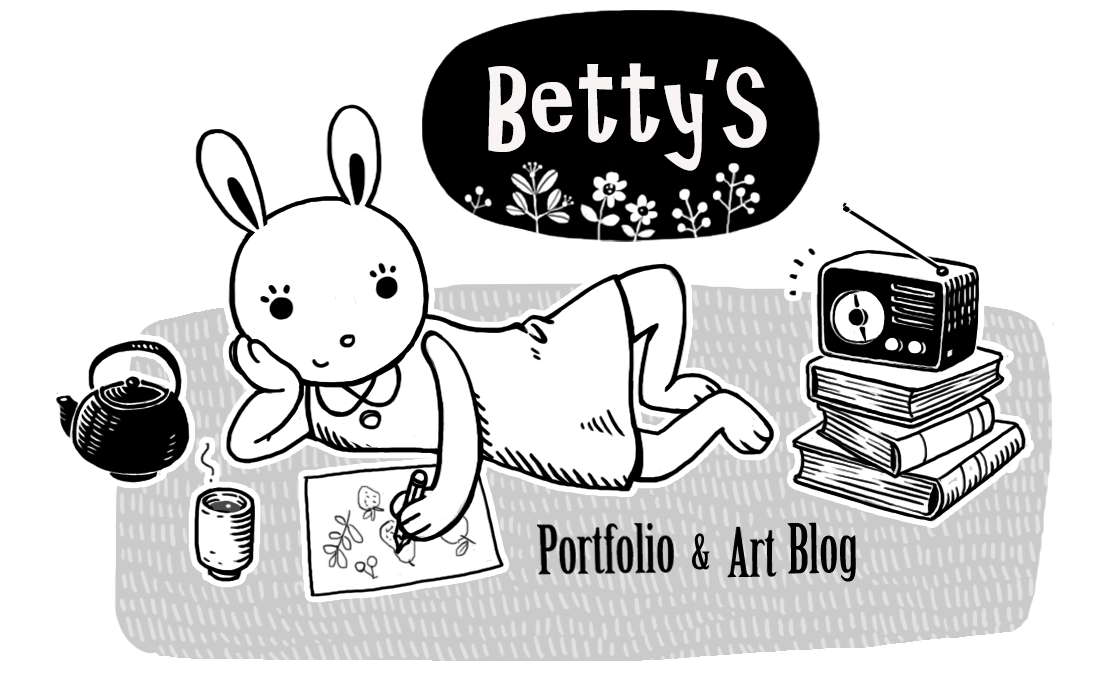Last year, I was contacted by the U.S. independent publisher CandleWick Press about designing the book cover for Lindsay Eagar’s new title: The Patron Thief of Bread. The commission includes a full coloured flat jacket ( they would like to see 3 drafts first ) and four interregional boarder designs in black and white for each chapter. I finally received the book from the publisher this week and it looks amazing in hand! I so decided to share my design approach with anyone who is interested in the making.
Research & Sketches
In the very beginning I've been given the full manuscript from the author, which doesn’t always happen. Most of the time the agency or author will provide you a summary of the story but in this case it was really helpful for me to have a over all grasp of the mood, world setting and the plot.
The Patron Thief of Bread is a story about tale of love, self-discovery, and what it means to be rescued, through the difficult orphan life of an eight-year-old girl named Duck, who was raised by a roving band of street urchins, one day found herself unexpectedly had become a patron thief in the bakery. The story takes place in a little town with an abandoned cathedral ruin ( with gargoyles on the top) adjacent to a winding river in medieval-era rural France. The town is small but bustling, with marketplaces, stores, and the bakery where the story takes place.
The initial drawing is shown below. I started by experimenting with all the elements Lindsay asked me to include for the cover. I like the gargoyle on the back, but the composition of the front half just doesn't seem as intriguing as it could be.
For the 2nd draft, a birds-eye view of the town as seen from the top of the cathedral ruin, with Duck standing on top of it, I opened the image after moving the gargoyle portion to the front cover. This version immediately felt more dynamic and interesting. I nearly feel like the wind is blowing in the scene because of the slanted angel and the birds. Even while I liked this second draft, it still seemed like our eyes were simply following Duck into the book spine and stopping there. Readers typically only glance at the front cover at first, so I'll need something to help them lock the glazing.
The monologue of the gargoyle in the book was written in a beautiful style that gave me an enteral sense of sorrow. Years after years, it stood by itself, all by itself, watching the passing of the mortals and longing for the things that were no longer there for it. I really love this folklore story-telling style, I was wondering how can I convey this feeling with drawings.
So I did more research at this point, looking for a solution to make the book cover less straightforward about the content and more expressive of the feeling. Something that makes reader wonder. It happened to me a few days ago I saw a collection of movie poster designs by Olly Moss. The double exposure design, which combined the essential elements of a movie with iconic scenery within the shape, really inspired me.
So in the 3rd draft, instead of giving Duck a face, I drew a silhouette of her to frame the town and surroundings. I hope the suggestiveness will provide the young readers enough information on the protagonist while still leaving room for their imagination, making it easier for them to relate to her story.
A few years ago, while developing my indie game LUNA, I also grew to love the ancient / mediaeval manuscript border designs, apparently this illustration was seen by people from CandleWick Press and that’s why they contact me at the first place. So I thought it could be great to add a beautiful border to the cover to give it a hint of the mediaeval era. I also broke up the layers with the birds, keeping the back cover with simply a quiet morning image of the town and bakery, and used a more vibrant twilight colour palette for the front, when the sun was setting and the town, rivers, and gargoyle were illuminated. As a result, this is how the 3rd draft looked.
Finalize & Detailing
It was a relief that later, when the author and art director Matt Roeser both chose the third design, we all adored the style and, with more assistance from Lindsay, she gave me the pieces that might be used in the border. The same concept also guided the placement of seasonal objects and story-related items in the header of each chapter. The challenging part was over, and this was when the fun started!
A detailed illustration needs a lot of references, in this case, anything from gargoyle design to French medieval town architecture. It’s funny that I used to think that all illustrators just KNEW how to draw everything from memory and that using references was somehow cheating? But turns out I was an idiot and everybody uses reference. References are crucial if you want to improve your drawing skills. Here are some of the sources I consulted to finish the illustration.
The final cover was completed after some tweaking and adjusting. Even though they initially appear to be there only for decoration, I adore how each object on the border refers to a specific section of the story. I hope the reader will understand what each of them refers to when they close the book's cover after finishing it.
Overall I really enjoyed the whole process and appreciated having the opportunity to design for this wonderful book. I’d be really happy if you might find anything usefully in this blog. It’s out and you can find it where you usually shop books! Happy reading!






